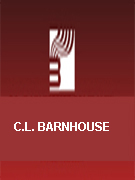Results
-
 £47.52
£47.52Mark of Triumph
A magnificent contest overture combining sensitive scoring with memorable melodies. The opening fanfare and processional leads to an andante section featuring lyrical solo passages that are not technically demanding. A variation of the opening theme brings the band to a powerful and triumphant conclusion.
Estimated dispatch 7-14 working days
-
 £109.99
£109.99Metalla Wind Band Set (Score & Parts)
Metalla was commissioned by the 'Kreisverband Altenkirchen' of Germany and dedicated to Ottomar Jung. The composer himself conducted the premiere of the piece, which was performed by the 'Jugendorchester Kreisverband Altenkirchen' on 25 March 1999.The region of Altenkirchen is known for its iron mines, which find musical expression in the dark mood of the introduction (andante misterioso). This effect is accomplished with overlapping seventh intervals, orchestral crescendos, a succession of broad chords and the presentation of most themes in the middle register of the band.The dynamic section (allegro energico) that follows the introduction is characterized by concise figures in the brass and a second motif, a kind of rippling motion depicting the Sieg River, an important element in the landscape of the Altenkirchen region.The work closes with a final theme that returns a number of times, albeit in different guises. After a brief repeat of the seventh intervals from the beginning, a last radiant chord signals the end of the piece. 0:05:15
Estimated dispatch 7-14 working days
-
 £44.55
£44.55Morning Song (Concert Band - Score and Parts)
Features the appealing melodies, exciting rhythms, and solid scoring that you have come to expect from Ed Huckeby. After an effective Maestoso introduction, the bright Allegro really punches out the main theme. The contrasting Andante section in 3/4 has a beautiful melody first presented in the upper woodwinds and then later with the full ensemble. Huckeby's previous pieces at this grade level have been extremely well received and "Oxford Pointe" is certainly one of his nicest efforts to date.
Estimated dispatch 7-14 working days
-
 £64.35
£64.35Regatta For Winds
A sparkling piece that begins with a brisk tempo, contemporary rhythms and bold chord changes. Beautiful andante section features a short trumpet solo and lush background writing which provides a wonderful contrast to the fast "regatta" sections.
Estimated dispatch 7-14 working days
-
 £144.99
£144.99Suite Marchigiana (Concert Band - Score and Parts)
According to a famous statement by Herder, folk songs represent the archives of a nation's knowledge, the expression of its heart and theimage that reflects its history and identity. Suite Marchigiana is a three movement piece, inspired by folk songs from the Marche in central Italy, a region with a very ancient and rich folkloristic heritage. The first movement elaborates on the well-known Pasquella. The Pasquella comes from a traditional winter begging ritual where a group of musicians go from house to house singing verses, wishing their audience good health, wealth and abundance, in return for small amounts of money, food and wine. The second movement is an Andante Triste inspired by an old song called Sona la mezzanotte (The Clock Strikes Midnight), a melancholic song that reminds us of unhappy love stories, bereavement, and so on. Luciano Feliciani concludes the suite with the Saltarello Marchigiano, which is bright and sparkling, and therefore in complete contrast with the previous movement. Although unproven, the Saltarello is thought to have its origins in the 'saltatio' (a latin dance). While the choreae were group dances, circular in structure and with a rhythmic progression, the saltationes were more lively in character. The fast, frenetic and joyous saltarello was without any doubt the most famous musical expression of rural central Italy in the nineteenth century. 10:20
Estimated dispatch 7-14 working days
-
 £71.28
£71.28The Golden Circle
Bold and vigorous! After a majestic opening and spirited allegro sections, the andante section features a lyrical solo for alto sax before building to an exciting and challenging conclusion.
Estimated dispatch 7-14 working days
-
 £109.99
£109.99The Horn of Plenty Wind Band Set (Score & Parts)
The Horn of Plenty is a composition which allows to present the Horn in many styles. The opening has an heroic character and exudes an Spanish atmosphere. The next part is a playful and lighthearted Leggiero. The melody used in bar 38 has an oriental sound through melodic use of the harmonic scale. The Andante is a parody on a piano etude by the composer Stephen Heller, a Frenchman of Hungarian descent. The piece ends with a relaxed swing area in which the Horn also in a different way can be heard. 04:45
Estimated dispatch 7-14 working days
-
 £59.40
£59.40Visions of Flight
Flourishing woodwind opening heralds a brilliant brass declaration contrasted by the warm sonorities of a beautiful Andante section. Interesting interplay of flight motives moves the ensemble to a dramatic conclusion.
Estimated dispatch 7-14 working days
-
 £59.40
£59.40Windsongs (Concert Band - Score and Parts)
The opening of this work is boldly announced with a fanfare and stately march. The drive of the exposition gradually yields to a reflective Andante characterized by long flowing melodic lines. A marvelous young band piece that provides outstanding opportunities for phrasing and expression.
Estimated dispatch 7-14 working days
-
 £41.58
£41.58With Honor and Pride
A distinctive composition that starts with an andante legato section featuring the woodwinds and then builds as the rest of the sections are gradually added to create a dynamic and impressive sound. Features a short solo for trumpet that is very effective. An outstanding choice for any concert or contest performance by mid-level bands. VERY HIGHLY RECOMMENDED!
Estimated dispatch 7-14 working days
